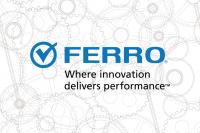Digital inkjet applications with low volatile organic compound (VOC) content

The development of more sophisticated, natural and visually-appealing products has led to a need for highly advanced production technologies. While continuing to develop technologies for large-size tiles and panels, companies are increasingly focusing on new digital printing techniques that use sophisticated high-discharge printheads to produce innovative materials with a more natural look while at the same time addressing issues of sustainability and care for the environment.
Today’s printheads for digital decorating machines have considerably increased their ink discharge capacity and in normal production conditions are able to deposit between 90 g/m2 and a maximum of 180 g/m2 of ink in a single pass. Examples of printheads with these characteristics include Dimatix HF and PQRL, Xaar 2001+ and Kyocera KJ4C 0306.
These printheads require inks that meet the following requirements:
- Water-compatible solvents
- Greater thickness of the applied layer
- Greater coverage of the decorated surface
- Drying time
- Environmental aspects: level of emissions, olfactory issues.
To satisfy these production requirements, the Ferro R&D department has developed two series of inks.

The DG (Decoration and Glaze) Inks, based on water compatible solvents, include both coloured inks and decoration and glazing inks that fulfil the above-listed requirements and are compatible with all printheads currently used by OEMs.
The Ferro H+Plus water-based series consists exclusively of decoration and glazing inks and is compatible with printheads and machines that allow water to be used as the main solvent. In view of the results achieved by printhead manufacturers combined with the applications offered by OEMs, it appears feasible that quantities of around 200 g/m2 can be applied to the decorated surface with particle sizes larger than a micron. This will bring considerable advantages and allow for various kinds of glazing:
- Thin layers of glazes with uniform thickness
- Digital application of protective glazes
- High-thickness digital decoration.
Did you find this article useful?
Join the CWW community to receive the most important news from the global ceramic industry every two weeks




















